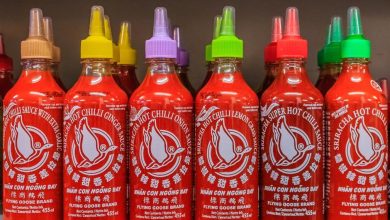Reasons Why drinking water in a copper vessel is beneficial
Why You Should drink water from a copper vessel

The water stored in a copper vessel is known as tamara jal and is supposed to be consumed after storing the water in a copper vessel for at least eight hours.
When you store water in a copper vessel or bottle for long ( eight hours or more), this metal releases its ions. The water gets infused with these copper ions.
This metal is known for its antimicrobial, anti-inflammatory, anti-carcinogenic and antioxidant properties. It also helps you maintain healthy levels of hemoglobin in the blood.
Moreover, it is good for cell regeneration too. The best part about this water is that it never becomes stale and can be stored this way for long periods of time.
Copper water is an emerging trend that promotes the practice of storing drinking water in a copper container or copper water bottle.
Still, you may wonder whether this practice is beneficial and safe or just another fake news.
Copper water isn’t a beverage you’ll find in the nearest supermarket or health store. Rather, you have to make it by storing drinking water in a copper container.
Copper is a trace element, meaning that you only need minimal amounts of it.
It plays a key role in multiple essential body functions, such as the production of energy, connective tissues, and your brain’s chemical messaging system.
It’s widely found in foods like shellfish, nuts, seeds, potatoes, whole grain products, dark chocolate, and organ meat .
Proponents of this practice state that storing water in copper containers allows the metal to infuse into the water, thus conferring benefits to the drinker.
Table of Contents
Claimed benefits
Proponents claim that copper water offers multiple benefits, including better heart and brain health, a more robust immune system, and even weight loss, anti-aging, and tanning effects.
However, it’s unlikely that copper water provides these health effects.
Instead, these benefits may merely reflect copper’s roles and functions in your body, given that it’s involved in energy production, pigmentation, the development of brain and heart tissue, immune system function, and angiogenesis the formation of new blood vessels.
Antibacterial effects
One of copper’s benefit appears to be backed by science its antibacterial effect.
Both old and recent evidence suggests that copper may be used as a water purification or sterilization system.
This may be especially beneficial for the estimated 1 billion people who don’t have access to safe drinking water.
Contaminated water can contain considerable amounts of bacteria, including Vibrio cholerae, Shigella flexneri, Escherichia coli, and Salmonella typhimurium, that can cause diarrhea which is one of the leading causes of death in developing countries.
Fortunately, simply storing water in a copper pot or vessel may kill these harmful bacteria.
The term “contact killing” is used to describe copper’s antibacterial effect. Researchers believe that exposure to the mineral causes extensive damage to the cell walls of bacteria, causing their death.
Potential downsides
Long-term exposure to high doses of copper may cause copper toxicity, which is characterized by nausea, vomiting, abdominal pain, and diarrhea. It may even lead to liver damage and kidney disease.
One way you may develop copper toxicity is by consuming stagnant water that flows through copper-containing pipes, which allow for high quantities of copper to leach into the water.
When it comes to water stored in copper containers, even for periods of up to 16 hours, studies show that the amount of leached copper is well below WHO’s safety limits.
Still, proponents of the trend suggest that you limit your copper water intake to 3 cups (710 mL) per day.
The bottom line
Copper water is simply water that has been stored in a copper container. This allows for safe amounts of copper to leach into the water.
While most of the practice’s purported benefits aren’t backed by scientific studies, it exerts an antibacterial effect that may kill diarrhea-causing bacteria in contaminated water.
However, research suggests that for the leached copper to kill bacteria, the water must be stored in a copper vessel at least overnight or up to 48 hours.
This means that the best containers are most likely copper pots or jars rather than copper water bottles that are filled on the go.
For any important information please contact us Email GadgetsNg info@gadgetsng.com
[Button id="1"]




Does your website have a contact page? I’m having problems locating
it but, I’d like to send you an email. I’ve got some creative
ideas for your blog you might be interested in hearing.
Either way, great blog and I look forward to seeing it grow
over time.
india pharmacy https://indiaph24.store/# Online medicine home delivery
reputable indian online pharmacy